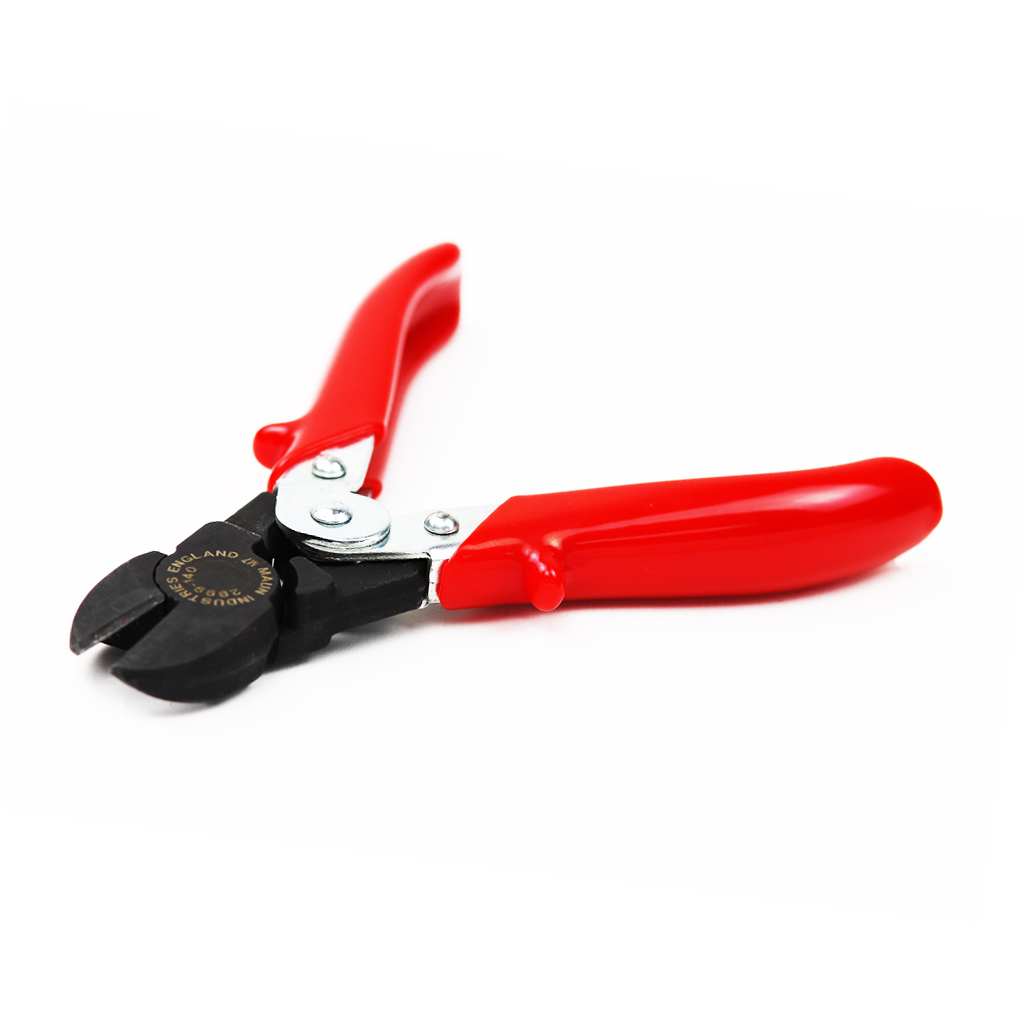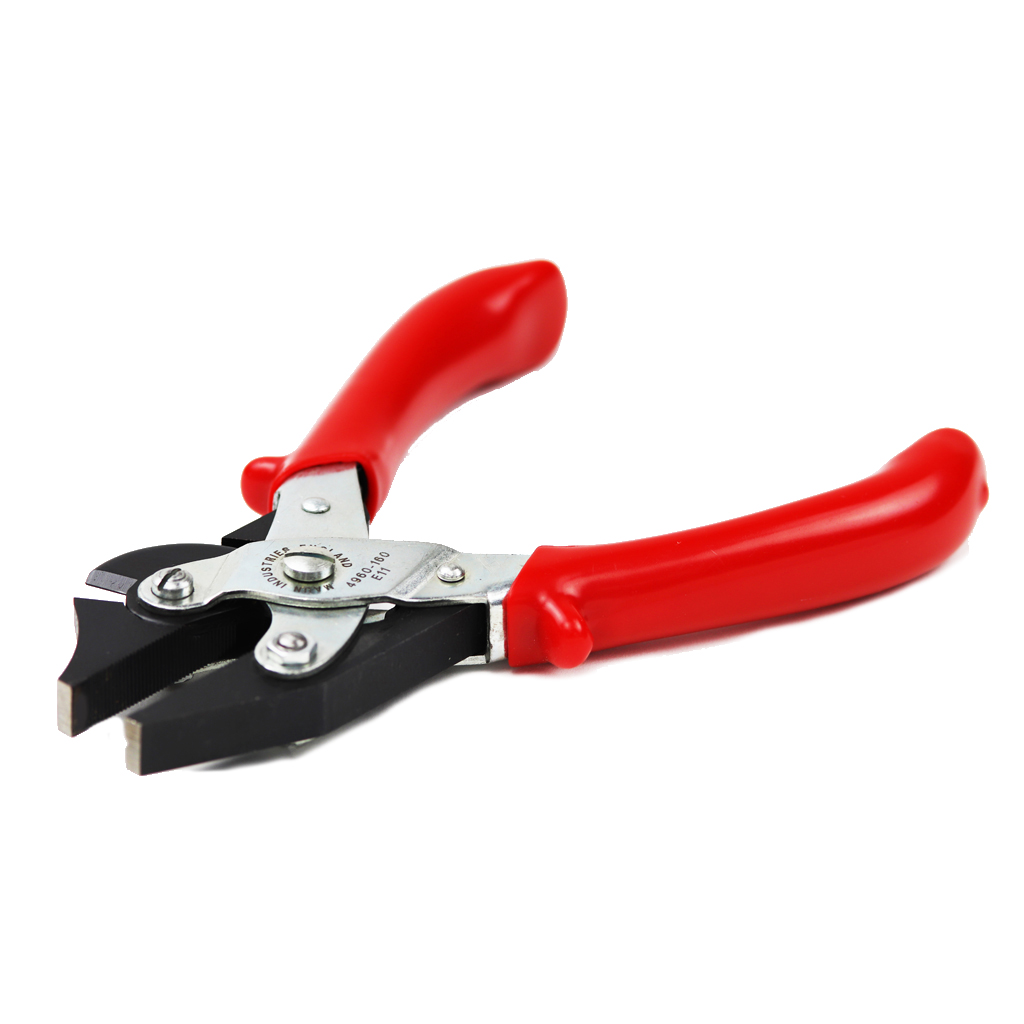How To Cut Wire With Pliers
5th Apr 2024
Many DIY fans find themselves cutting wires during various tasks.
Although cutting wire might not seem difficult, you need to take steps to choose the right tool for the job and take the necessary safety precautions.
Read on for our full guide.
First choose the right cutters for your wire
The cutting pliers you want to choose will depend on the type and thickness of wire you’re looking to cut .
You also need to consider any space restrictions around your cutting target and whether you need multiple functions in one tool (e.g. cutting and bending).
It’s also important that the cutting jaws are hardened to ensure they don’t go blunt after minimal use.
Best cutters for heavy duty solid wire

When cutting heavy duty wire, you want pliers with a larger “land” width (the actual width of the cutting edge), which are not as sharp, but provide much more leverage against a single piece of metal wire.
If you’re working in a smaller space, then the Side Cutter Parallel Plier For Hard Wire Comfort Grips 140 mm is a good option, whereas if you need maximum leverage for cutting hard wire up to 3 mm in diameter, then the Side Cutter Parallel Plier For Hard Wire Comfort Grips 200 mm is a good option.
Best cutters for multi-strand electrical wire

Cutting through multi-strand electrical wire requires diagonal cutting pliers with a small “land” width and very sharp jaws, which allows them to cut through multi-strand electrical wire in one cutting motion.
If you need a smaller pair of cutters for small spaces, then the Diagonal Cutting Plier For Hard Wire Comfort Grips 140 mm is a great option. Whereas if you need maximum leverage for thick soft wire up to 4 mm diameter, then go for the Diagonal Cutting Plier For Hard Wire 160 mm .
*Note: these pliers are not insulated, and so cannot be used on live electrical wire.
How to cut wire with pliers

Once you’ve chosen the right cutter, here is the best method to use when cutting wire:
1. Ensure your workspace is clear.
2. Put on safety goggles and gloves.
3. Hold the pliers in your dominant hand.
4. Position the wire at 90 degrees to cutting jaws of your pliers.
5. Apply pressure until the wire is cut, this may require two hands.
6. Release the pliers once the wire has been cut.
Types of Pliers
Diagonal cutting pliers

Diagonal cutting pliers are also referred to as side cutters.
These versatile cutters can be used to cut various wire types and gauges, and they come with a sharp, angled cutting edge that simplifies the process of cutting wire both cleanly and effectively (cleaner cuts than scissor-type cutters).
They tend to be great for cutting soft wire, including copper wire.
Needle-nose pliers
Needle-nose pliers have long and narrow jaws which taper to a point. They can be highly efficient when working in tight spaces and when you need to cut or manipulate small wires. If they have a cutter, they can be effective when you need to cut soft, thin wires, including jewellery wire.
Combination pliers

Combination pliers (also known as Lineman’s pliers) are robust pliers designed to help you cut and grip/twist wire. They come complete with a sturdy cutting function and can cut through thick materials, such as aluminium and steel wire. They are often used to cut and twist wire in electrical work.
Safety precautions
Here are the most important safety precautions to take when cutting wire with pliers:
- Eye and hand protection – wire can be sharp, particularly when cut, so ensure you wear gloves and googles when cutting metal wire. Make sure your gloves and googles fit properly, as exposed skin will be at risk of an accident.
- Insulated pliers for live electrical work – if you’re working with live electrical wire, you must use insulated pliers that are at the right voltage and current ratings for what you’re working on.
- Securing the wire – if the wire is moving while you’re cutting it, this can increase the chances of an accident, so using a clamp can help with this.
- Check pliers before cutting – it’s important to check the condition of your cutting pliers before using them, in case they are damaged or have gone blunt over time. This will prevent accidents from needing excessive force or the tool breaking.
Did you know that you can save money with Maun Pliers sets?
How to cut wire cleanly and effectively
- Ensure the wire is positioned securely in the jaws of the pliers before you start cutting.
- Choose the right kind of pliers for the wire you are cutting. Using pliers that are too small for the wire can damage the cutting face.
- Use two hands to apply extra force when you are cutting thicker or harder wire.
- Cutting wire in a well-lit area can help you prevent injuries and errors.
- You can use wire strippers to clean up multi-strand wire that is frayed or uneven after you have cut it.
How to cut curtain wire
Curtain wire is the same strength as piano wire, and so the best way to cut it is to use cutters designed for hard wire, such as the Maun Diagonal Cutting Pliers.
Caring for and maintaining your pliers
Here are our main tips for ensuring your pliers last the longest time possible:
1. Cleaning – clean your pliers after each use, by wiping them with a clean cloth or rag. This will help to remove dust, debris and other residue from the tool.
2. Oil – apply a light coat of oil to the cutting jaws, to help maintain the cutters and prevent rust.
3. Sharpening – if your tool is blunt, you can sharpen the blades with a file or sharpening stone to get rid of any nicks or burrs.
4. Storage – store your pliers in a cool dry place. This can be in a toolbox or on a shelf.
Following these steps should ensure your pliers serve you well for many years to come.
Conclusion
We hope you enjoyed our post on how to cut wire with pliers.
Browse our related posts below, or contact us with any questions:

